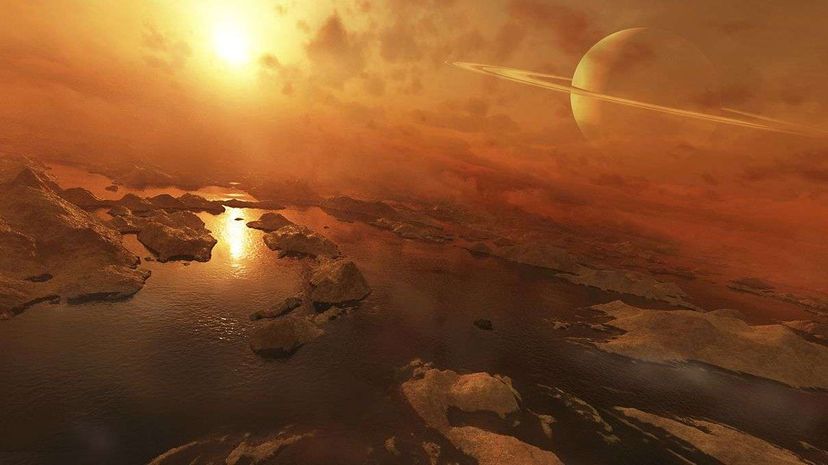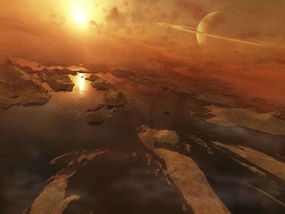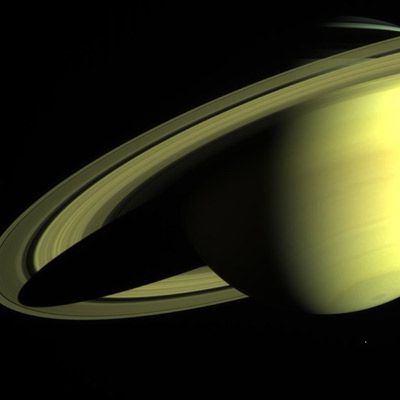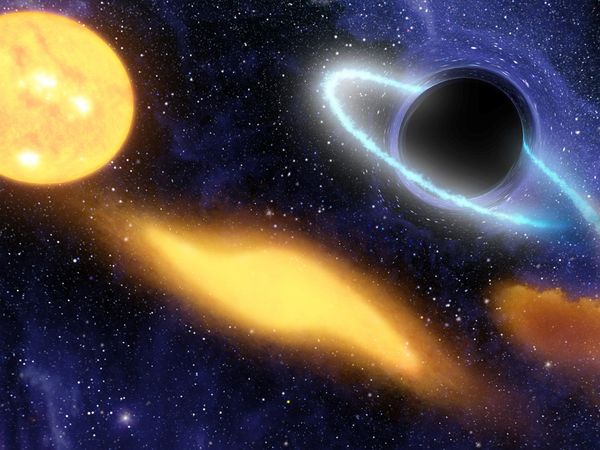
A fascinating new NASA video gives us a glimpse into the atmosphere of one of our solar system neighbors like never before. The footage shows cloud streaks developing, moving and eventually fading above the surface of Titan, the largest moon of Saturn. Traveling at a speed of about 14 to 22 miles per hour (22.5 to 35.4 kph), the clouds are composed of methane.
Besides Earth, Titan is the only other body in the solar system where we've found large amounts of liquid on its surface. NASA's time-lapse video above was created using a narrow-angle camera and infrared filters over a period of 11 hours, with one image taken every 20 minutes. While the Cassini probe has photographed clouds on Titan before, most have been one-off snapshots — this new sequence of images is the best instance yet of allowing scientists to examine cloud formation and movement on Titan.
Advertisement

Scientists have predicted that clouds would be most prevalent on Titan's northern hemisphere during its summer — seasons on the moon last about 7.5 years — but they've seen fewer than expected. The northern summer peaks next year. Titan is also the only known non-terrestrial landscape where liquid rain falls from clouds all the way down to solid ground.
Before the Cassini mission, scientists here on Earth thought they'd find massive amounts of liquid ethane on Titan. But it wasn't until 2014 that analysis of Ligeia Mare, the moon's second largest sea, showed it is primarily made up of methane. Both are saturated hydrocarbons, and only one carbon atom apart, but methane is particularly exciting when exploring the cosmos because we know its existence can be a byproduct of life as it's found on Earth.
"It's a marvelous feat of exploration that we're doing extraterrestrial oceanography on an alien moon," said Steve Wall, deputy lead of the Cassini radar team, in a press release. "Titan just won't stop surprising us."
Scientific probing also indicates that it's likely Titan has a subterranean liquid ocean 35 to 50 miles (55 to 80 kilometers) beneath its surface, most likely composed of water and ammonia. Want to learn more about Titan and see what its surface looks like? After watching the video of clouds on Titan at the top of this article, check out this NASA computer-generated "flyover" video created with colorized, amplified data collected from 2004 through 2013:
Advertisement


